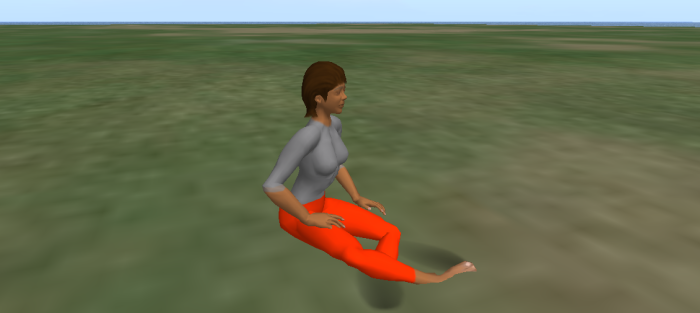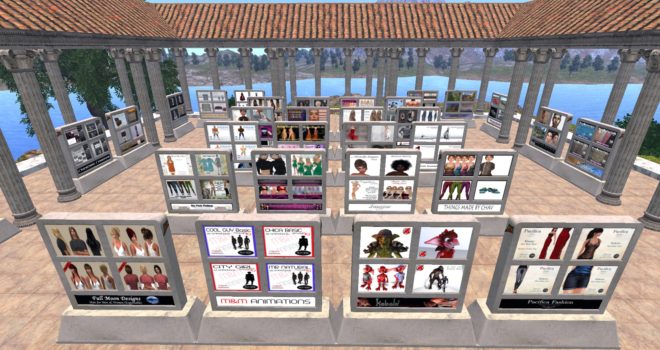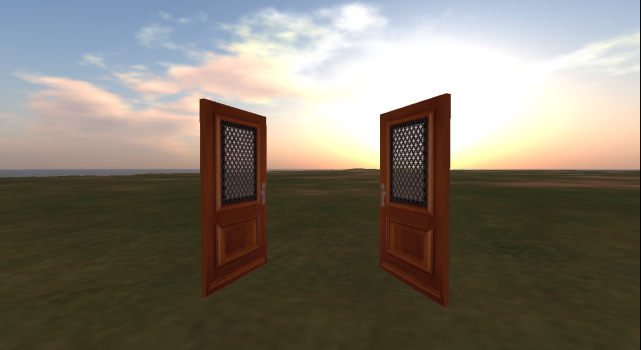A lot of folks are interested in getting a career in virtual reality these days, and I don’t blame them. The industry is exploding.
So I’m getting emails from folks asking me for advice in how to get started. My standard advice is to go to college for a degree in whatever aspect of virtual reality you are interested in — programming, graphics design, marketing, business development — get internships, network, volunteer on relevant open source projects or for non-profits, join professional organizations, and then use your college’s job hunting resources when you get close to graduation.
But let say, for whatever reason, this is not an option for you, and you’re looking for a different path.
Here’s my advice for how to get started in OpenSim.
Of course, there are lots of other possibilities as well. I’m focusing on OpenSim because that’s the one I know best.
1. Learn the basics
There are many online tutorials for getting started in OpenSim, or in Second Life, which works pretty much the same way.
 [1]
[1]Here is a basic overview of OpenSim [2]. Here is how to travel the hypergrid [3]. You can also visit Orientation Island in Second Life [4]Â for the basics of using the viewer.
2. Make things for sale on the Kitely Market
Why not get paid while you learn?
For example, the Kitely Market [5] delivers content to more than 100 different virtual worlds, but is relatively new, so there is much less competition than in Second Life. Plus, it doesn’t cost any money to start creating and selling things on the Kitely Market.
 [6]
[6]Just get a free account on Kitely [7], download the viewer, log in and teleport to the Kitely Merchants Sandbox [8], and start creating stuff.
There are a lot of products you can start with, but I’ll suggest starting with building supplies. There’s a shortage of them on the market right now, and if you want to get high-paying custom building work, this is a good area to start with.
Take, for example, your basic swinging door [9]. There are only five options right now on the Kitely Market — compared to 175 in Second Life [10].
 [11]
[11]Here is a basic tutorial for how to build a swinging door [12]Â and a Creative Commons-licensed script [13] that you can use for free to make products for sale. Don’t forget to check license terms carefully before using any images or scripts to create products, and give full credit when required.
Once you have something that works well and looks nice, create your Kitely Market store and upload the object [14]. It took me a few tries the first time I did it, because I had to be careful to set the correct permissions for every component and link things in a way that makes sense.
Once you create your store, and put your name on it, and make your first product, you can modify it to offer people a wider range of choices, and also expand to more product categories.
You can specialize in design and learn how to make mesh or create custom textures. Blender [15] is a popular free tool for creating mesh, and GIMP [16] for textures.
You can specialize in scripting, starting by working your way through the many LSL tutorials available online, or looking at open source scripts and modifying them.
You can also learn how to do animations.
 [17]
[17]There are many free online resources available. For a quick head start, look to Linda Kellie content, which is licensed CC0. That means that you can do anything with it, including using it to make things for sale. You can download the files you need at Zadaroo [18] or visit the Stuff [19] and Clutterfly Redux [20] regions on Kitely to pick up everything in-world. She has clothing, textures, animations, building supplies, mesh objects, and lots of templates for creators. It is a fantastic resource for getting started. I’ve written about her templates and those of Damien Fate here [21].
Remember to make your creations exportable, so buyers can get them delivered to their own grids. This is particularly important if you plan to do custom building and scripting work for businesses, educational institutions, and non-profits.
 [22]
[22]It is possible for someone with no skills whatsoever, like me, to work on mesh clothing [23] and import it into OpenSim for sale. I personally would not start with virtual fashion, since it’s a competitive field, but if you do, here are some tips to get started from a successful designer [24].
And practice, practice, and practice. Develop your own visual style, learn what sells and what doesn’t, listen to customer feedback to improve your work, and look at what the competition is doing both in OpenSim and in Second Life for inspiration.
3. Offer custom development services
Once you have honed and tested your design, building or programming skills, give yourself a promotion and start doing custom work for enterprise customers.
Set up a website featuring examples of your designs, link to this website in all the products you have listed on the Kitely Market, write how-to articles for Hypergrid Business or other online publications, create video tutorials for YouTube, and do volunteer work for non-profits and other causes you support.
Use your social media accounts to promote the work of other builders and designers, and don’t be afraid to refer potential customers to those competitors if you think they would be a better fit. That way, instead of having to fight your way through better-qualified and more-experienced competition, you will be someone they would think of first for when they need collaborators or are looking for someone to refer projects to. Plus, you will earn the reputation of being someone who works well with others.
You can also volunteer to help out on the OpenSim and Firestorm development teams. There’s usually a big need for folks to do testing and writing documentation. Then, after you’ve proven yourself to the team, you can help out with actual development work and start learning your way around the code base.
If you have any questions, or get stuck on anything, or want to find out more about writing articles for us, don’t hesitate to email me at maria@hypergridbusiness.com [25].